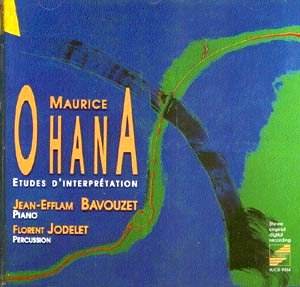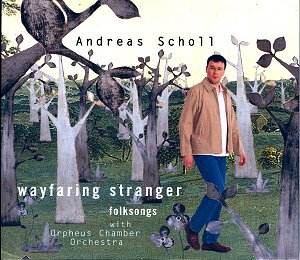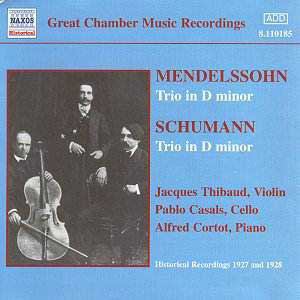 Composer: Maurice Ohana
Composer: Maurice Ohana
Works: Douze Etudes d’Interpretation pour piano Set 1 (1981-2), Set 2 (1984-5)
Performers: Jean-Efflam Bavouzet (piano), Florent Jodelet (percussion)
Recording: Recorded at the Abbé Royale de Fonteyrand, October 1995
Label: Harmonic Records HCD 9354
Maurice Ohana, a seminal figure in 20th-century French music, offers a captivating exploration of sound through his Douze Etudes d’Interpretation pour piano. Composed between 1981 and 1985, these studies serve as both technical challenges and profound artistic statements, reflecting Ohana’s unique synthesis of Western classical tradition and his fascination with non-Western musical elements, particularly African music. The duality of these influences creates a rich tapestry of sonority and rhythm that invites both performers and listeners into a world of intricate textures and colors.
Jean-Efflam Bavouzet’s interpretation of Ohana’s studies is a masterclass in musicality and technical prowess. Bavouzet, a close friend of the composer, embodies an intimate understanding of the music, which is evident in his nuanced phrasing and attention to detail. Each study possesses its own character, and Bavouzet deftly navigates these distinct sound worlds with clarity and sensitivity. For instance, in Etude No. 2, “Mouvements Paralleles,” the initial five-octave melody in minor ninths is played with a crystalline precision that seamlessly transitions into a playful toccata. Bavouzet’s ability to delineate such contrasting sections while maintaining an organic flow speaks volumes about his interpretative depth.
The technical demands of Ohana’s etudes are not merely exercises in virtuosity; they are avenues for exploration and expression. Bavouzet’s approach to Etude No. 1 from Set 2, which is dedicated to Bartók, is particularly striking. The opening diatonic melody is transformed into a dense web of chords, and Bavouzet’s command over dynamics allows him to evoke the timbre of a marimba, effectively conjuring its resonant qualities. The interplay between the piano and percussion, particularly in the final two studies where Florent Jodelet enhances the texture with a variety of instruments such as tam-tams and Chinese cymbals, adds an additional layer of complexity and richness. The percussion elements are not merely adjuncts but integral to the overall soundscape, reinforcing Ohana’s vision for a multifaceted auditory experience.
The recording quality is exemplary, capturing the vibrant nuances of Bavouzet’s playing and the intricate percussion interjections with clarity. The acoustics of the Abbé Royale de Fonteyrand lend a natural warmth to the sound, allowing the harmonic complexities of Ohana’s writing to resonate fully. The engineering ensures that the subtleties of the piano’s timbre, from delicate whispers to powerful outbursts, are presented with fidelity, enhancing the listener’s immersion in the work.
Comparatively, Ohana’s piano studies can be contextualized alongside the works of contemporaries like Ligeti, whose own studies delve into similarly ambitious territories of sound and rhythm. However, while Ligeti often gravitates towards intricate polyrhythms and complex textures, Ohana’s studies reveal a more lyrical and sonorous approach akin to Debussy’s and Messiaen’s explorations of color. This is particularly evident in Etude No. 3, “Contrepoints libres,” where the barless notation and superimposed staves create an ethereal quality reminiscent of Messiaen’s Préludes. The delicate coruscating lines interwoven with static bass create a landscape of shimmering sound that invites contemplation.
The depth and artistry present in this recording of Ohana’s Douze Etudes under Bavouzet’s sensitive touch marks a significant contribution to the understanding and appreciation of this underrepresented composer. The performance not only illuminates the technical brilliance of Ohana’s work but also reveals the emotional and sonic landscapes that lie within. This recording stands as a vital testament to Ohana’s legacy, showcasing a compelling fusion of innovation and tradition that resonates deeply with the listener.



